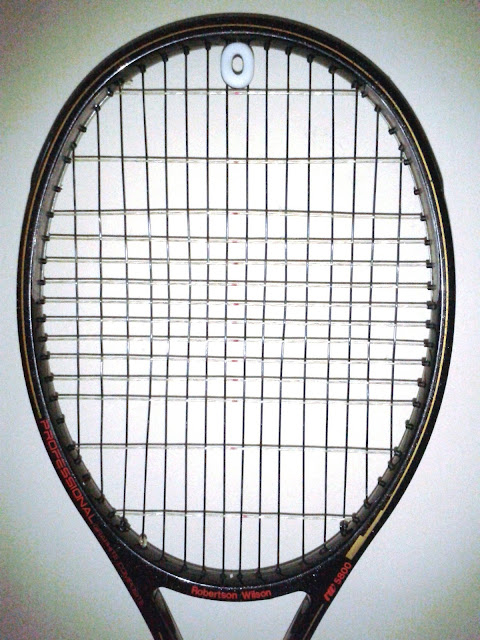Since I barely clocked about 2 hours of play with those strings, I decided to restring only the cross with a multifilament. I really enjoyed the multi mains with big ace cross last time (link), so this is a good opportunity for me to test the reverse of big ace main and multi cross.
I also varied tension in the cross strings like the rw5800 racket but without skipping any crosses. (link) This is to test if:
1. I should proceed to test a full setup of proportional stringing, and
2. softer crosses would allow the mains to slide more and generate more spin.
As with the rw5800 racket, I marked a straight red line on the cross strings to see if the cross strings tension would even out after play.
Playtest:
- as with the rw5800 racket, the red line did not move at all, so tension holding of the cross strings is excellent!
- this is a very comfortable big ace/multi hybrid setup that i would rank only slightly behind multi/big ace
- control, spin and power are all excellent which is very rare
- volleys actually feel very easy as I only have to get the racket in position and the strings do the rest
- this setup is an all-rounder and unless I find something better, i will continue to use this
- below pic is after almost 2 hours of hard hits (I straightened out only the mains)
4th Jan 2013 Update:
- Below pic is after 6+ hours of play and 7 days after stringing --> red line is faded but still straight!!!
24th Jan 2013 Update:
- Below pic is after 10+ hours of play and 27 days after stringing --> red line is faded but still straight!!!
- At this point, the Big Ace feels totally flat and dead. Will have to cut it out.
Strings:
Pro Supex Big Ace Revo 1.25mm mains @ 54 lbs
Pro Supex Maxim Touch 1.30mm cross @ 45-50-45 lbs





































